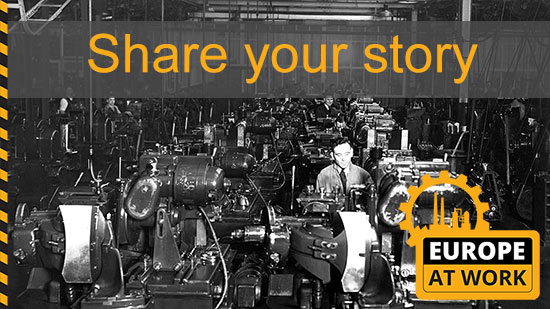This blog looks at the memories of those who worked on archaeological digs and projects in Lithuania during the Cold War, with a focus from 1948 to 1968.
The Iron Curtain was the non-physical boundary between Western and Eastern Europe after World War II. During these decades, Lithuania was occupied by the Soviet Union, affected by war and occupier repressions. All ways of life involved intricate situations - including archaeology.
This blog looks at the memories of those who worked on archaeological digs and projects in Lithuania during the Cold War, with a focus from 1948 to 1968.
Participants
Women and young boys were the main participants in archaeological excavations in this period. During World War II, more than a million people died, a third of the population of Lithuania. Thus, the workforce was dramatically reduced. As a result, students near the excavation sites were the main available labour force.
Clothing
During archaeological excavations, participants wore traditional clothes. Men and boys usually dressed in trousers, shirts and jackets, while women wore dresses, shirts and skirts.
Attention should be paid to the women’s clothing because, from the 1960s, during archaeological excavations, women started to wear trousers and changed their style of dressing. Nevertheless, trousers were still the exception.
A number of factors underpinned this change in women’s clothing. The Soviet Union had began new reforms, with new industries created. Work in factories changed employees' clothing. Women became part of the workforce. And a new wave of 'modern and simple' Soviet fashion began.
Collectivisation
At the end of World War II, collectivisation started in Lithuania. After five years, as much as 94% of the country’s land was collectivised.
Remembering the first archaeological expeditions after the war, in 1949, archaeologist Adolfas Tautavičius wrote: An expedition took place under difficult conditions. The government started to found Kolkhoz collective farms and Sovkhoz state-owned farms, and began the deportation of farmers. Part of these farmsteads were empty - without windows, doors, overturned fences. Inhabitants were frightened.
Records of archaeological excavations mention digging activities in collective farms' fields. Rimutė Rimantienė described: 'We had to excavate a Stone Age settlement, but the leader of the Kolkhoz forgot and planted potatoes in this site. But everything was ok. The leader let us dig the potatoes. We dug it day after day and ate potatoes, kefir and salads, and later cucumbers and tomatoes.'
RELATED: Explore the Cold War in photographs in Blue Skies, Red Panic, an exhibition of photographic perspectives of Europe in the 1950s
Tools and equipment
After the war, there was a lack of archaeological tools and equipment. Archaeologist Pranas Kulikauskas wrote about what happened between 1948 -1949: 'We didn‘t have any tools or equipment. Trowel and brushes were borrowed from other museums. The Museum of Šiauliai gave us a camera. We drew the plans ourselves.'
RELATED: Explore this gallery of archaeologists at work
Food
Food was very important during the excavation. Normally, archaeologists cooked food for themselves. Sometimes there were exceptions, either hiring a cook or eating in canteens. In general, the particants sourced food in two ways. They bought milk products, bread and vegetables from local people. Other participants fended for themselves, by picking berries and mushrooms, and catching fish in rivers.
Archaeologist Rimutė Rimantienė remembered in a diary: 'Here in Rudnia village, life is very good. The forest is full of berries. The girls picked a lot of berries, but we could not eat them all, so, from what was left, we cooked and made jam.'
By Šarūnė Valotkienė, Vilnius University Faculty of Communications
Europe at Work: Share your story
Did you or your family work in archaeology in Lithuania or elsewhere? Share your story and help us tell the story of Europe through our working lives in the past and the present.
This blog post is a part of the Europeana Archaeology project, which digitises Europe’s rich heritage of archaeological monuments, historic buildings, cultural landscapes and artefacts.
Bibliography
- Kulikauskas, Pranas, Kelias į archeologiją. Vilnius: Vaga, 2003.
- Rimantienė, Rimutė, Aš iš dvidešimtojo amžiaus. Vilnius: Vilniaus dailės akademijos leidykla, 2010.
- Volkaitė-Kulikauskienė, Regina, Dienoraščių pynės. Vilnius: Lietuvos nacionalinis muziejus, 2016.
- Tautavičius, Adolfas, Iš archeologo užrašų. Vilnius: Nacionalinis muziejus LDK Valdovų rūmai, 2016.
- Eidintas, Alfonsas; Bumblauskas, Alfredas; Kulakauskas, Antanas; Tamošaitis, Mindaugas, Lietuvos istorija. Vilnius: Eugrimas, 2012.

